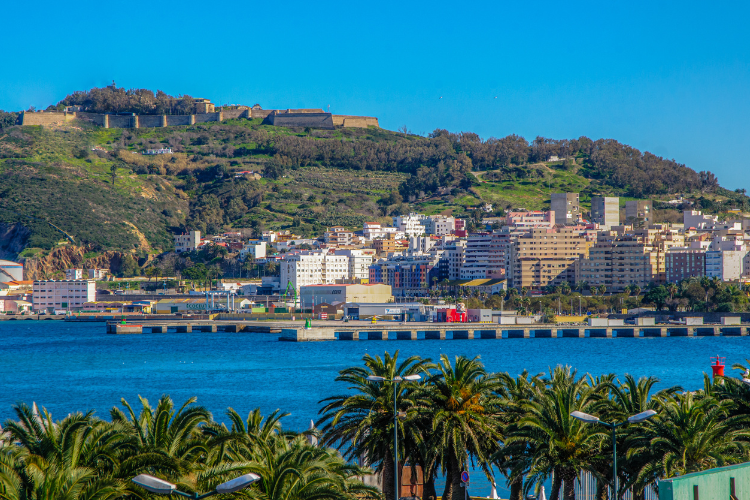Last Updated on September 23, 2024 by Maryam Siddiqui
Coming in for a short scouting trip or to relocate here completely? Let’s help you pack your bags accordingly. Although the country is known for its pleasant weather all year round, you must research the differences between cities and regions. Follow along to know what the weather in Spain looks like throughout the year

You must’ve noticed that tourists love visiting Spain regardless of the month, even when the sun is scorching hot. Throughout the rest of the year, temperatures are mostly mild, but they vary according to the region. You’ll find an oceanic climate, a cold semi-arid climate, and a typical warm Mediterranean climate too.
This article details all that you need to know to pack according to the region you’ll be relocating to. What is the temperature? What is the average rainfall and humidity level? Does it snow anywhere? Let’s find out!
What is Spain’s climate like?
With over 3,000 hours of sunshine a year, mainland Spain is considered one of the sunniest countries in Europe. But being sunny doesn’t mean it’s scorching hot all year round.
Towards the north, in cities like San Sebastián, Bilbao, and Santander, you’ll experience milder temperatures but high humidity and frequent rainfall.
As we move towards the southern region, the temperature starts rising. This region is home to cities like Seville, Granada, Málaga, and Cádiz. All of these are incredible cities for expats interested in less populated areas with a low cost of living. But the temperatures do rise to nearly 35 °C, which can be extremely high for those who aren’t from hot climates.
Towards central Spain, which is close to more popular cities like Madrid and Toledo, the climate is generally better. You will experience cold winters and warm dry summers, but not as extreme as the southern region.
Take a look at the table below, compiled by Climate Data:
| Type | Region |
|---|---|
| Oceanic Climate | Bilbao, Gijón/Xixón, Vitoria-Gasteiz, Oviedo / Uviéu, Pamplona |
| Hot-Summer Mediterranean Climate | Madrid, Barcelona, Seville, Málaga, Córdoba |
| Warm-Summer Mediterranean Climate | Valladolid, Vigo, A Coruña, Salamanca, Lugo |
| Cold Semi-Arid Climates | Valencia, Zaragoza, Palma de Mallorca, Elche / Elx, Almeria |
| Humid Subtropical Climate | Terrassa, Sabadell, Sant Cugat del Vallès, Manresa, Rubí |
Weather in Valencian Community
The Valencian Community lies in the southeastern side of Spain and consists of three main provinces: Valencia, Alicante, and Castellón.
Throughout the year, you’ll experience diverse weather in Spain, which means you’ll have diverse activities to enjoy while you’re here!
Valencia is one of the largest cities in Spain and is also one of the most famous. The expat community here enjoys a Mediterranean climate with mild winters and hot summers, with lots of unique attractions to keep you entertained.
At the start of the year, the Valencian community experiences Spring, with temperatures between 15 °C to 22 °C. During this season, the weather is ideal for outdoor activities like hiking in parks such as Albufera or Serra de Mariola. Or exploring Valencia’s famous Turia Gardens.
As summers start rolling in, the beaches of Costa Blanca, including Benidorm and Alicante, start to get more crowded. The temperature during summer is near 30 °C, but the locals still love it anyway.
As the weather starts to get cooler, winter steadily arrives, with temperatures staying above 8 °C. It’s a great time to explore wine tours and Christmas markets.
Weather in the Balearic Islands
Located in the Balearic Islands are the famous and vibrant cities of Mallorca, Menorca, Ibiza, and Formentera. With lots of unique experiences and fantastic nightlife, living here comes with endless fun!
Famous for its world-renowned nightlife, Ibiza Town also boasts historical sites like Dalt Vila, a UNESCO World Heritage Site. The most crowded time of the year in Ibiza is summertime when the town comes alive with beach clubs and electronic music festivals.
Summer temperatures rise to nearly 31 °C, with the lowest average around 25 °C. The warm Mediterranean waters on popular beaches, Cala d’Or and Cala Comte, are perfect for swimming.
Winters are mild, and temperatures stay between 10 °C to 15 °C for the most part. If you’re interested in cultural and historical tours, this is the perfect time to experience them without the crowd.
Weather in the Canary Islands
Spain’s coastlines are one of the most stunning things about the country. The Canary Islands have some of the best beaches in Europe and are renowned for the water sports activities you can do in summer.
While it can get hot, with temperatures nearing 30 °C in summer, the coastal breeze keeps it cool and comfortable. Rain is more common in the northern part of the Canary Islands. Nonetheless, the weather in Spain during these months does not prevent people from having fun.
Winter in the Canary Islands is milder than in the Balearic Islands. Temperatures range from 15°C to 22°C, which isn’t even considered cold by many people. But this is a great time for outdoor activities, sightseeing historic sites like Vegueta and volcanic landscapes.
Let’s Move to Europe
With Viv Europe your plans for Europe will come to a reality
Weather in Andalusia
Home to the famous cities of Seville, Granada, and Málaga, Andalusia is a region known for its stunning architecture and rich culture.
Summers can be hot, reaching up to 35 °C in Seville and nearby. While it is quite hot, coastal areas benefit from cool breezes and can enjoy the vibrant nightlife at the end of the day.
Andalusians are also known for their hospitality and friendliness, which makes it easier for new expats to integrate into the community. Outdoor living is very common in Andalusia, and families gather in parks, plazas, and beaches to enjoy big meals.
The Sierra Nevada, which is home to Spain’s highest peak, Mulhacén, receives snowfall during winter. This makes it a popular destination for skiing and snowboarding.
What is Spain’s climate average?
Now that we’ve covered what the weather in Spain feels like, let’s dive into some data: temperatures, rainfall, and humidity!
The temperatures
Take a look at some of the average temperatures in different regions of Spain:
| Data | Madrid | Valencia | Salamanca | Bilbao | Terrassa |
|---|---|---|---|---|---|
| Maximum temperature | 32.4 °C (90.4 °F) | 30.8 °C (87.5 °F) | 29 °C (84.2 °F) | 22.3 °C (72.1 °F) | 27.9 °C (82.2 °F) |
| Minimum temperature | 0.9 °C (33.7 °F) | 6.6 °C (44 °F) | 0.7 °C (33.2 °F) | 6.3 °C (43.4 °F) | 1.6 °C (34.9 °F) |
Data is from Climate Data.
Average rainfall
Even though it doesn’t rain much, knowing what to expect is good. Take a look at the average rainfall and the humidity levels in different regions.
| Data | Madrid | Valencia | Salamanca | Bilbao | Terrassa |
|---|---|---|---|---|---|
| Average Rainfall | 55 mm (2 in) | 50 mm (2 in) | 52 mm (2 in) | 81 mm (3 in) | 58 mm (2 in) |
| Average Humidity | 46.5% | 59% | 60% | 77% | 70% |
Data is from Climate Data.
How many days of sunshine?
As you can probably tell, Spain experiences a lot of sunshine—almost 3,000 hours annually, which totals 250 to 300 days!
If you’re moving from the United Kingdom or Germany, the weather in Spain will be a huge change since both these countries experience almost half the amount of sunny days.
Of course, it’s normal for coastal regions in Spain to experience more sunshine. The northern regions experience more cloudy weather accompanied by rain.
- Read Also: Weather In Portugal: What Each Season Is Like.
Does it snow in Spain?
While you will find very little snow in cities in Madrid, it does snow more in mountainous regions during the months of December to February.
Some popular destinations for snow sports are Pyrenees, Sierra Nevada, and Picos de Europa, which regularly experience snowfall.
As an expat in Spain, the snow never really comes in between your daily life, which is a huge plus for some people. If it ever gets too cold for you, turn your heater on, sip on some luscious wine, and enjoy the magical vibe!
When is a good time to visit Spain?
To be fair, the weather in Spain is pretty much always pleasant. The best time to visit Spain is when you’re ready to explore the country on an exciting scouting trip!
Hold on – we’re just having fun. The best months to visit Spain are just when summer is about to start, April and May, and early fall, September to October. You’ll find that the temperatures are moderate the cool breeze makes your days feel less tiring, and it’s a lot less crowded too.
If you’ve already done your research and wish to relocate but don’t know how, book a free consultation with our experts. From your visa application to settling in your new home, we’re here to help every step of the way.
See you soon!





